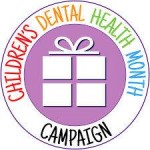Children's Dental Health Month
February 17th, 2017
February is Children's Dental Health Month! Dental decay is the most common chronic childhood disease in the U.S. but, it's preventable! Teach children to brush their teeth for two minutes, twice a day with fluoride toothpaste. In addition to brushing an easy way to get Fluoride to help protect your teeth is just to drink tap water! Studies show that fluoride in community water systems prevents at least 25 percent of tooth decay in children and adults.

The Biggest No-No Food
January 16th, 2017
Unfortunately for our patients with braces, popcorn is a no-no. It may not seem like it, but Popcorn is the single worst thing you can eat with braces. The reason? Popcorn kernels! For someone without braces, popcorn kernels can cause minor discomfort, but can be relatively easily taken care of with floss or a fingernail. However, with braces in place, kernels can get stuck for extended periods of time, leading to extremely painful swelling of gum tissue, requiring removal of braces and wires to clean out the area.Remember to ask Dr. Hughes about popcorn alternatives and all the wonderful things that you can eat while in braces. Before you know it, the braces will be off and you can go back to enjoying popcorn again!

Early Treatment
January 1st, 2017
When is the best time to begin orthodontics?
Although an orthodontist can enhance a smile at any age, there is an optimal time period to begin treatment. Beginning treatment at this time ensures the greatest result and the least amount of time and expense. The American Association of Orthodontists recommends that the initial orthodontic evaluation should occur at the first sign of orthodontic problems or no later than age 7. At this early age, orthodontic treatment may not be necessary, but vigilant examination can anticipate the most advantageous time to begin treatment.
What are the benefits of early orthodontic evaluation?
Early evaluation provides both timely detection of problems and greater opportunity for more effective treatment. Prudent intervention guides growth and development, preventing serious problems later. When orthodontic intervention is not necessary, an orthodontist can carefully monitor growth and development and begin treatment when it is ideal.
Why is age 7 considered the optimal time for screening?
By the age of 7, the first adult molars erupt, establishing the back bite. During this time, an orthodontist can evaluate front-to-back and side-to-side tooth relationships. For example, the presence of erupting incisors can indicate possible overbite, open bite, crowding or gummy smiles. Timely screening increases the chances for an incredible smile.
What are the advantages of interceptive treatment?
Some of the most direct results of interceptive treatment are:
Creating room for crowded, erupting teeth
Creating facial symmetry through influencing jaw growth
Reducing the risk of trauma to protruding front teeth
Preserving space for unerupted teeth
Reducing the need for tooth removal
Reducing treatment time with braces
Are you a candidate for orthodontic treatment?
Orthodontics is not merely for improving the aesthetics of the smile; orthodontic treatment improves bad bites (malocclusions). Malocclusions occur as a result of tooth or jaw misalignment. Malocclusions affect the way you smile, chew, clean your teeth or feel about your smile.
Why should malocclusions be treated?
According to studies by the American Association of Orthodontists, untreated malocclusions can result in a variety of problems. Crowded teeth are more difficult to properly brush and floss, which may contribute to tooth decay and/or gum disease. Protruding teeth are more susceptible to accidental chipping. Crossbites can result in unfavorable growth and uneven tooth wear. Openbites can result in tongue-thrusting habits and speech impediments. Ultimately, orthodontics does more than make a pretty smile—it creates a healthier you!



